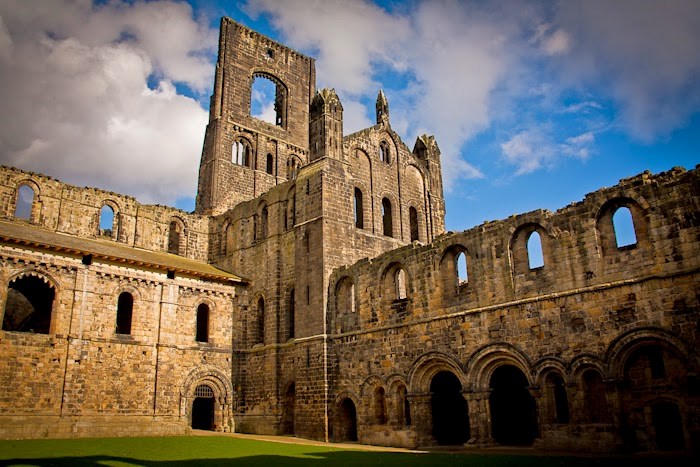
03 Aug 2017
New display piecing together abbey’s illustrious past
A collection of fascinating finds has been brought together in a new display reconstructing the colourful history of Kirkstall Abbey.
Beautiful medieval tiles, which the abbey’s Cistercian monks strolled upon centuries ago, and a tiny tuning peg, which may have belonged to a visiting medieval minstrel, are among the archaeological discoveries being exhibited this week.
On display in four cases inside the abbey’s visitors centre, the collection aims to explore some of the many chapters in the story of the 865 year-old former monastery through objects uncovered during a series of excavations of the site.
Katherine Baxter, Leeds Museums and Galleries’ curator of archaeology, said: “Kirkstall Abbey has been part of the landscape of Leeds for more than 860 years now and has played a key role in some important moments in the history of our city and our country.
“Standing in abbey’s beautiful ruins today, it takes quite a lot of imagination to picture how the building must have looked when it was home to Cistercian monks and decorated with elaborate church windows and stunning tiled floors.
“Bringing together this collection of objects helps us to build a more complete picture of how the Abbey has appeared through the ages as well as exploring some of the people who have visited and what they’ve done here at different points in the building’s long and captivating history.”
The display features some of the nearly 2,000 floor tiles in the Leeds collection alongside crockery used by the monks, items from the abbey building and small personal objects dropped by visitors to the abbey, many on display for the first time.
Among those is a Medieval bone tuning peg, used to tune stringed instruments like harps, lyres or lutes, which was found during excavations at the abbey’s guesthouse.
In the 1400s, Fountains Abbey regularly paid for minstrels, strolling players and fools so it is possible that similar artists once performed at Kirkstall.
Councillor Brian Selby, Leeds City Council’s lead member for Museums and Galleries, said: “Kirkstall Abbey is one of our city’s most stunningly beautiful and historic locations and has been such an important part of our local heritage for centuries
“Giving visitors a more detailed look at the abbey’s history through this display will help preserve that heritage as well as retelling some important parts of the building’s fascinating story in a whole new way.”
Monks began building Kirkstall Abbey in 1152 on land gifted to them by wealthy nobleman Henry de Lacy.
They flourished in their new home until the Dissolution of the Monasteries when, on November 22, 1539, Abbot John Ripley surrendered the abbey to King Henry VIII’s agents.
In the late 1800s the abbey buildings were bought by Colonel John North, who donated the grounds to the Leeds Corporation in 1890. Today, Kirkstall Abbey is one of the country’s most well-preserved monasteries.
The new display will be in the Abbey’s visitor’s centre during opening hours and is free to enter.
For more details, please visit: http://www.leeds.gov.uk/museumsandgalleries/Pages/Kirkstall-Abbey.aspx
ENDS
Stuart Robinson
Communications Officer
Leeds City Council
Tel: 0113 378 9182 (please note my new number)
Email: stuart.robinson@leeds.gov.uk
www.leeds.gov.uk
For media enquiries contact:
Leeds City Council Communications team
communicationsteam@leeds.gov.uk